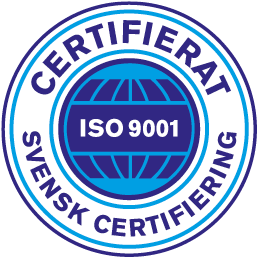S&OP MasterClass™
Holy Grail of Sustainability & Supply Chain Planning
Welcome to this S&OP MasterClass.
These MasterClasses have the purpose of diving into Integrated Business Planning and Supply Chain Planning in general, hopefully giving you some good inputs on the way.
894050344
How do you operationalize the sustainability scopes in your supply chain planning?
Answering that question is the holy grail of sustainability and planning.
This episode will aim to get answers to the questions above. What will this episode cover? Below are some topics that this episode will cover.
- Deep data transparency
- Data-based emission scenario planning
- How and where to optimize your supply chain
- And much more
Benjamin Obling will help you navigate the complexities of sustainability and planning with his extensive experience in S&OP and Integrated Business Planning.
Your host is Søren Hammer Pedersen
This podcast is produced by Montanus.
In This Episode
Listed below are the most essential timestamps from the podcast episode to make it easier for you to find the topics that interest you.
01:00 Why we should be interested in sustainability as supply chain professionals.
02:12 What you need to work sustainability into your supply chain planning.
04:02 The new dimension to planning and business strategy.
07:29 How planners should operationalize sustainability targets.
10:36 Automating sustainable decisions
13:39 Monitoring and controlling sustainability initiatives in your S&OP
Full Episode Transcription
Søren Hammer Pedersen (00:08):
Hello, everybody. Warm welcome to this S&OP Masterclass from Roima and Perito IBP. My name is Søren Hammer Pedersen. I’ll be your host for this podcast here today. The purpose of these S&OP masterclasses is to dive into hot and trending topics within supply chain planning, give you our perspective on them, see what we see from our clients at the moment, and hopefully give you some trips and tricks that you can utilize in your own daily planning back home.
(00:36):
Today’s topic is no different. We are looking at inventory reduction, how to reduce working capital. A topic that is very hot at the moment out in many, many companies. If you haven’t seen it the last workshop or the last podcast was around this planning exercise. What is this situation that companies find themselves in at the moment getting this task from the CEOs to reduce inventories, to reduce working capital? If you haven’t seen that, please go back and get updated there. But on this episode here today, we are diving more into the topic of the supply chain assessment, an area that we established last time is quite crucial for the success of these transformation projects. So we’re going to dive into a deep water here today to talk about what are the elements of these supply chain assessments. As usual and as the last time, I’m not alone in the studio, I brought my very good colleague, Benjamin Obling, welcome, Benjamin.
Benjamin Obling (01:39):
Thank you.
Søren Hammer Pedersen (01:40):
We can’t be sure that everybody saw the last podcast. We of course expect to, but we can’t be sure. But just for the new listeners out there, could you please give a short introduction? Who is Benjamin?
Benjamin Obling (01:52):
Yeah, my name is Benjamin Obling. I’m COO of Perito IBP.
Søren Hammer Pedersen (01:57):
Good. Well established. Let’s dive into the topics. We’ve got to be very concrete here today and talk about the supply chain assessment. Just a short recap here in terms of what we established. Last time we talked about what are the elements when you get this quite crucial task of getting the inventories or getting the working capital down, but not losing any of the good things in the company in the same process.
(02:23):
So how to do it in a balanced way. And we established that, okay, we need to analyze the situation, we need to get fact-based, we need to make a supply chain assessment, make a good rollout plan and a good business case for that. And of course get the project started. But getting into the business, sorry, the supply chain assessment. First question of course from people will be : What exactly is a supply chain assessment?
Benjamin Obling (02:55):
Yeah, so the supply chain assessment is where we go into a company and then find out what is the potential in optimizing the inventories, the working capital, balancing it, because that’s really the key word here is balancing the inventories with the commercial perspectives and the networking capital. So what you do in the assessments is that you build up a model of the reality, you could say, like a digital twin and then see, okay, if we optimize on the demand planning side, how much can we improve that? And you do that at a very detailed level and data driven. So it’s not like an overall benchmark because you can’t really do that operational to very much, you can’t use it.
(03:41):
You look at the demand planning and then say, “Okay, can you improve that?” And then turn to the inventory planning saying, “Okay, can we optimize inventory levels?” So right now a lot of focus on reducing the inventory levels, but really the focus here is balancing. Maybe you increase it on some, maybe you decrease it on others to the right size and balance the inventories.
(04:03):
And then also it’s possible then to look further on in the supply and see, okay, in terms of capacity, et cetera, are there any optimizations you can do there. But really getting the business case around improving supply chain planning with a fact-based business case.
Søren Hammer Pedersen (04:23):
So really quite a structured process actually with the end result ending up in a recommendation, a business plan, and actually maybe even more concrete, the picture of what kind of transformation, where are we now? Where should we be in X amount of time? How to get there.
Benjamin Obling (04:42):
Yeah, exactly. So it’s really both about getting up into the helicopter and then say, “Okay, what are the overall issues in supply chain planning that we have in the company? How can we address those?” And then going all the way down to the single item level and be able to, as we say, land the helicopter to go to the lowest level because that’s really where you need to prove your case and say, “Yes, we can improve it at this very detailed item level,” for example.
(05:05):
And then when you summarize all of those potentials, okay, this is the total potential you get. Okay, is there enough in orders, can we justify to move on? And then if yes, okay, so let’s set out the plan. And based on the fact-based business case here, you’ll also see, okay, what are then the levers? What is it we need to do? What is the diagnostic of the supply chain planning? What do we need to do to optimize it?
Søren Hammer Pedersen (05:30):
Okay. But of course listeners will say, “Okay, but you have to start somewhere.” So where do you start here in this? If we take them step by step here, I guess it’s all about data in the beginning or how do you see when getting started with this assessment?
Benjamin Obling (05:46):
Yeah, there’s usually some lead time on getting the data and we’re pretty sure in most cases on what data we need to do. So that’s why we start with the data to get that rolling. That would be things like we need the historical sales down to item level and date and quantity, et cetera in different markets. We need to know what the inventory levels are. Also at a very detailed level, what are the different lead times? MOQ, so there are a lot sets of planning data and transactional data that we know for sure we are going to need.
(06:18):
So that track will get started pretty fast so we can make sure that the lead time doesn’t become a bottleneck for us later in the project. And then very fast after that, jumping into the overall business requirements. So to make sure up in the helicopter again and then say, “Okay, so what is the overall pain here that we are addressing?” Obviously we’re addressing inventory optimization and balancing. That’s the whole purpose, but how does the stocking strategy look, for example. So how can we enable the company to align between the commercial side of the optimization and then the operational side in terms of working capital, et cetera. So what are the overall business objectives that we are aiming at?
Søren Hammer Pedersen (07:01):
Yeah, so you’re looking at the first step is both basically strategy and data. Maybe one question on the data, I think the first question I would think of is: Do I need perfect data? Do I have the data I need? Do we need all my data? How do you usually experience that and what do we recommend here?
Benjamin Obling (07:24):
Yeah, so the perfect data is always a big problem because you don’t have perfect data. I’m almost certain to be able to assure you that but you could say we could always see that we have lacking master data that is not super crisp, et cetera. And if you want to wait and insist on waiting until master data, all the planning parameters, et cetera are optimal before you make an assessment like this, you’ll never get started.
(07:52):
So you have the data and the data quality you have and you’ve got to live with that for some period and then get started. So there we extract the data with whatever quality it has. Then we try to quantify, if you have low data quality an example could be the MOQ, so what is the minimum order quantities that you purchase, for example. That is a master data field that you would need in order to create proposals and that we need in order to optimize the supply chain planning.
(08:22):
Very specific example, if that field is not really maintained, so it’s maintained on some and not others, et cetera, what we can do then is to assess it. So we go back in time and then we look at what have you actually purchased, so what are the quantities that you are normally purchasing? Okay, you’re purchasing a hundred, a hundred, then sometimes 150 and then 80 and a hundred and a hundred.
(08:44):
So it’s probably a hundred, in the master data, maybe it says five hundred. So in this case we’re pretty sure because we have five observations, four of them a hundred, the rest, the remaining one is pretty close or two pretty close, so we’ll go with a hundred instead of the five hundred. So you could say there are ways to get by get past the lacking master data because we need to assess something and then say, okay, yeah, maybe it’s not a hundred, maybe it was actually 150 and the times with a hundred was wrong, but at least a hundred is a lot better than using five hundred.
(09:20):
So let’s start, look at it, then create some alerts as part of the assessment of saying, okay, so the master data quality here is X percent and here you have the list of what you need to start and to fix and correct. And then you get started.
Søren Hammer Pedersen (09:37):
And what about another point, is it a sample of data or is it you need The Full Monty to do anything here? What’s normal for you?
Benjamin Obling (09:48):
Yeah, we normally recommend to have quite a big sample because you need to be able to cover as much of the company, so you know in confidence that this business case will actually pull through. So we actually do have enough. So let’s say we cover 70, 80% of the working capital, then we are sure that we have something here that we can actually extrapolate to the rest.
(10:12):
If you take a very small sample and do a few examples there and extrapolate, you might be recommending something which is completely wrong. On the other hand, if you have say really poor master data in one small area, it’s not covering a lot, you can leave it out and then say, okay, we’ll cover 80% and that’s enough to establish that we do have a case. But normally we do it with hundreds of thousands of materials because a lot of this is automated analysis process. So it’s something that we can analyze with quite large bulks of data.
Søren Hammer Pedersen (10:48):
And then you mentioned of course the stocking strategy as a starting point actually before we do any assessment, but don’t you experience sometimes that the strategy is lacking basically and it becomes part of the assessment almost to have this? Or is it just a crisp world out there with nice pretty strategies all along?
Benjamin Obling (11:11):
Yeah, we touched a bit upon it in the previous podcast and yes, it is surprisingly often that there is not a clear strategy. You could say one way to go by it here would be to say, for example if we talk about the stocking strategy, on all the items where we do have a safety stock or basically a make to stock strategy right now, we will see if we can optimize those levels. So we don’t change the scope, we don’t change the stocking strategy. So that is like an ”AS-IS” situation. Can we optimize that? In many cases, yes, it needs to be increased in some, decreased in others. Net effect is often a decrease in inventory.
(11:48):
So that could be one set of say outcome of that. Then the next step could be, what if we challenge the stocking strategy and then say do we have some items, some markets where we don’t have a target stock right now, would that make sense to take in? What would that cost us? What would that decrease in dry runs? And on the other hand, on all the ones where we have a stocking policy now and we would like to be make to stock which ones of those should be taken out potentially, and we can also calculate that. So we can make different scenarios in that saying, with a given ”AS-IS” scenario, let’s see what the potential is. What if we start to challenge the assumptions around the stocking policy?
Søren Hammer Pedersen (12:31):
And I think of course why I also mentioned it is that if it’s something that we as a supply chain professional need to be aware of. It can be quite dangerous, I guess to just take whatever stocking strategy there is in the company or is in the ERP system made like four years ago, which is a normal situation. And just running with that, it needs to be part of this assessment to at least evaluate and analyze what do we have on the shelf at the moment.
Benjamin Obling (13:00):
Yeah. Absolutely. That is the recommendation. But also knowing that here you’re really entering also a large area because making that full alignment across the company with sales operations, CFO, et cetera, down to the single item level, that can be a pretty big task. So you need to make some assumptions around that stocking policy and then you can still build a pretty solid business case.
Søren Hammer Pedersen (13:24):
At least highlight where you see the problem and not try to fix everything in the assessment.
Benjamin Obling (13:28):
Exactly.
Søren Hammer Pedersen (13:28):
That’s good advice. Then I guess we have the data, we have talked about the strategy, then first part of the assessment looking at the demand, I guess, finding out how that is, how do you do that step in these assessments?
Benjamin Obling (13:44):
Yeah, so what we do is we roll back time, so that could be like a year rolling back time a year from now. So we have all the sales data say for the last three or four years, then we roll back time because of course, we need to see how is the company performing in terms of forecast accuracy and how could we potentially perform in using an optimized approach. So how much can we reduce the forecast errors or improve forecast accuracy? And in order to do that, we need to do it in parallel. So we need to say, okay, this is the automated, the new optimized demand forecast for the period. This is the company’s proposal or the company’s forecast, actual forecast, and then what is the sales for that month, for example, on that item. And then we calculate the accuracy.
(14:31):
That’s what we want to do and we want to do that for multiple months. But the thing is, we don’t want to wait multiple months because we want to have a short decision process, and that’s where the rollback time comes into the picture. Because what we do is then we go, at least say 12 months back, and then we start to do the forecast with that actual. And then we say, so if we roll back to January this year and then say, okay, we had all the data, all the sales data until December last year. Now we do the forecast for January and onwards, and then we take one actual month in, say, okay, then we get the actual of January, then we do the forecast again for February onwards. So we actually do the same as what the company has been doing for the last 12 months, for example, without of course knowing the future, otherwise it would be cheating and absolutely worthless.
(15:24):
So in doing that, we can then, once we’ve went through the time, just speed it up, then we can compare, so on the single item number, January, February, et cetera, what was the client’s, the company’s, forecast? What was the actual sales and the accuracy there? What was the optimized forecast and what was the actual? And then what is that forecast accuracy? And then looking across all of these different, say thousands of items and different months with different offsets, so how much time before did we make the forecast, et cetera, all of that is something we can configure and measure. Then we can see, so what was the actual forecast accuracy that was say, I don’t know, 60, it can improve to 70 as an example. So that’s the potential, is that worth enough for the company, which is then in the inventory analysis to show.
Søren Hammer Pedersen (16:22):
Yeah, of course. I guess the link to the inventories here, if we can improve the forecast, then we can reduce the safety stocks.
Benjamin Obling (16:28):
Exactly, exactly. And you get a one-to-one. You could say that when you reduce the uncertainty in the future by having a better forecast, you can reduce the target inventory, the safety stock, the buffer. So that’s why it will impact the service levels positively or working capital positively.
Søren Hammer Pedersen (16:46):
So I guess every, not every, but most assessments you see will have an improvement here. We can typically improve the forecasting.
Benjamin Obling (16:55):
Yes. You could see the cases where you don’t have improvements would be in the cases where you have a lot of market intelligence. So if it’s very project driven, so very few projects that you really need to nail and you don’t have a lot of repeated sales, then it can be the case that it’s important to have a strong market intelligence input. But even let’s say in fast changing environments like fashion, we normally see that we can improve accuracy. So we don’t need a lot of history and repeated sales before it actually makes sense to make a combination of the algorithm based optimized forecast and then the market intelligence input.
Søren Hammer Pedersen (17:36):
Okay. But then we of course we have the demand in place, a vital part of the assessment, but the big one of course being inventory analysis, suppliers analysis in this assessment. Basically, how do you go about that elephant?
Benjamin Obling (17:56):
Yeah, chopping up the elephant in pieces, I guess. One step in doing that is to build a digital twin or simulation of reality, what we call Monte Carlo simulation. So we build up a model of reality, so that means whatever lead times the customer have on the single item numbers, extracting that data obviously as before, using that in the model, what is the lead time uncertainty if we do have that variance? We’ve seen that a lot. And variance is going down now fortunately, but still being relevant. We have the MOQs as example, we have the past sales. That’s the uncertainty on the demand of course, together with the past forecast and the optimized forecast. And a range of other input parameters that will go into this simulation. Then we will simulate reality as if we were a planner planning, or an MRP system planning according to that forecast, according to the safety stock we are simulating. And we do that a lot of weeks.
(18:56):
So week by week into the future, a bit like with the forecasting, so doing what would in reality happen. And when we do that, a lot of times with different target stocks, then we can optimize, so what is actually giving us the best outcome, the best result on this single item level? And then we get a outcome of saying, what do we need to require for working capital if we have 95% service level? What about 96, seven eight nine, et cetera? So different service level intervals.
(19:29):
That means afterwards we can summarize all of that and then say, okay, for the whole company, what is then actually the impact of going from 99 to 98 or to 97, et cetera? How much impact will that give us? Or we could let the algorithm optimize the financial business case on the single SKU by itself to say, okay, so with the gross profit of X on this item with this on uncertainty, with the lead time uncertainty, et cetera, and we’re simulating, we have this gross profit, so when we go stock out, we lose our gross profit of course minus possible back orders and then say, okay, so what is then the lost sales, we have the cost of that, and what is the working capital and what is the capital cost of capital of that?
(20:16):
And then what is the financial optimal solution to do? And that will calculate and say 97, that is from a financial point of view, the best service level.
Søren Hammer Pedersen (20:27):
So basically all about balancing and optimizing all the planning parameters as the company has within this area.
Benjamin Obling (20:35):
Yeah.
Søren Hammer Pedersen (20:35):
But building, of course, our listeners have to think about, okay, this has to go into a business case or I need to show some potential. And just for example, you get different potential depending on service levels in the company. And we just established also that not a lot of companies have this really firm fixed stocking strategy. What do you do then in the business case here? Just assumptions or how do you handle that on uncertainty around what is the right level, what is the right potential here?
Benjamin Obling (21:08):
So then we can set different scenarios. So one scenario could be if we have the same service level as we have now, so the historical service level for the company, what would then be the inventory reduction that we can do? So that could be one, if we maintain that service level, then we can reduce by X percent for example. One scenario.
(21:29):
Another scenario would be, okay, what if we actually spent some of that working capital reduction in improved service level? So how many stock out situations could we avoid and how much service levels could we increase as a different scenario? And then it’s really up for the management to take a look at the different scenarios and then see, from a financial point of view, pure financial point of view, this would be optimum. But we want to push it a bit further up in service level because let’s say we want to improve our revenue, now we are really all about growth, et cetera. Okay, so we want to push that up a bit, even though financially maybe it’s not optimal, but on the long run it will because of strategic decisions. Or you have a short-term situation where you’re really lacking cash, so you need to bring down the inventories, even though financially optimal it would be 97 for example will go down to 95 in a shorter period because we have some strategic initiatives now.
Søren Hammer Pedersen (22:27):
So what you’re saying is that even though we can present the fact there’s also in many cases a strategic decision to be made afterwards. What is the right level of actions for our company in a sense? So it’s not affixed from the assessment necessarily?
Benjamin Obling (22:45):
No, and it’s maybe because it ends up being a figure you need to put into the material master in the supply chain planning for the MRP. I mean this sounds super boring, but it really should have more attention from top management because this is a strategic decision in my point of view. Okay, how do you want to serve your customers? What is the experience they should have? How often should they have a experience, a dry run? How much can you increase revenue if you reduce the dry runs and how much can you reduce working capital? I mean that is strategic decisions that should be on C level attention and it is in many cases.
Søren Hammer Pedersen (23:25):
Now we talked about of course, much about the inventory, but what about the raw materials or the components going in the supply side of things? Do we have those in these assessments as well typically, or is it something that you typically leave out?
Benjamin Obling (23:42):
If we have either big issues with the raw materials or semi-finished or big potential in the footprint of pushing the inventories up or downstream or you have a big working capital basically on raw materials, then certainly yes, that should be included in the analysis. And that’s also possible. Then you would take out the outbound consumption of the raw materials. So you would look at for this raw component, for example, it’s used in 10 or 20 different bill of materials, so production orders for those semi-finished or finished using this raw material, so what is the uncertainty? What is the consumption that we see and what is the variance and uncertainty in that? And then you can optimize the safety stocks according to that.
Søren Hammer Pedersen (24:31):
Okay. So this step was of course building the whole analysis, getting down to the single SKU actually really having the facts on the table, but then you have to present it, I guess it is the next step, breaking down the potential, building the business case. What is your recommendation? How you go about doing that, typically?
Benjamin Obling (24:52):
Yeah, normally we would have two different ways of presenting it. One is the overall insights, of the analysis. So that would normally be an analysis presented PowerPoint level where you look at the total, what is the total impact here that we can gain, the improvement of the forecast accuracy in total? Break it down so we understand is it one lucky punch or is it actually a consistent improvement, et cetera. And also with the working capital, so that’s the one sort of the report, you could say PowerPoint. But then also showing it, demonstrating it directly in the tool itself so that the company can see, okay, we can actually, get in the helicopter, but we can also land the helicopter. We can demonstrate right down to the single item level that yes, this means that on this item level we had a hundred of safety stock, we should have seven instead or whatever, if it’s a huge reduction. And when you summarize all of that, you’ll get the total business case of that.
(25:57):
But the reason for being very specific and being able to go all the way down to the single item level is also to validate the business case. Because the planners they need to be able to present different cases of big reductions and potentials where they sort of need to nod and say, “Yeah, I can see that we could actually reduce this two hundred safety stock to 150, for example. That would make sense. I can see that.” Because if they sort of are able to say, yeah, okay, but in this case it actually doesn’t make sense because X, Y, Z, and the next case it also doesn’t make sense because… Then there is no business case, and then maybe we can show something in PowerPoint, but then we can’t operationalize it afterwards if you can’t take it all the way down.
Søren Hammer Pedersen (26:43):
And I think maybe a keyword, you said there was tool because automation and how to make this stick. I hope you agree that a vital point here is that we need to be aware that this is not a one shot analysis. Of course it is, you get a picture and some recommendation out of it, but also a vital part of this assessment is to elaborate on how to make this stick in real life afterwards and make it work nine, 10, 12 months down the road.
Benjamin Obling (27:18):
Yeah. And that’s really where you can say one thing is the report, the presentation. Basically the only thing it should do is to say, do we move forward? Does it make sense? Is there a business case, yes or no? Let’s set the business case and let’s realize it. The next part on actually doing it, that’s showing it in the tool, which means, okay, now we can see, yes, we can actually do this. We can do it all the way down to the lowest level.
(27:42):
But then in the next phase also taking that and then combining it with the process saying, okay, so what is it that we actually need to do and change in our everyday life to make this work and how do we implement it afterwards in using it? But when you see the link between the business case all the way down to this is where you change the domain forecast, this is where you change the target service levels, the process part and starting to live it is a lot easier because you can see it. Basically it’s a set of concrete tasks, even though it sounds we need to make a transformation of the supply chain.
(28:17):
Okay, yes, but so what do I do on Monday morning when I get to work? This is what you do on Monday morning. You go into this part of the tool, you coordinate with sales and that would be Peter from product launch, et cetera, and so on. So then you can make it more specific because otherwise it’ll just again be one report. You’ll have a lot of focus on it. Inventories will probably go down, but they’ll sure go up again.
Søren Hammer Pedersen (28:41):
I guess just my thought process working here on what you just said in terms of the change management and making mistakes, I guess the facts on the table also helps you here. You have to go out now and one thing is to persuade the management. That can be done with a business case in many cases. I’m generalizing a bit here, but you also have to persuade an organization afterwards to do something different and to use the tool and to use automation. I guess the facts on the table here, they can actually see it in the system and they can see what we did before and what we do now helps in this process.
Benjamin Obling (29:19):
Yeah, absolutely. Absolutely. But I mean there’s no reason that we should kid ourselves and each other, this is tricky. I mean, it is tricky to change and it is a change management task obviously to change people. Planners have been used to doing things in a certain way and now they’re going to do things in a different way. And I think that really the key is, as you say here, is to be able to show it concrete with examples and taking it all the way down to the single level where they can see, okay, yes, that actually does make sense.
(29:52):
And then also having the respect for the planners in knowing they have knowledge that is not in the model or might not be in the model. So how do we make sure that that knowledge is either incorporated into the model or we make sure that they have the time and focus to take care of that additional parts that they have of knowledge that we need to take into account instead of just automating it completely and then have the planners doing something else.
(30:23):
That’s normally not the right case because there are still so much in the supply chain, so many moving parts that you need the planners, planners in there, but you can just hand them over the torch so much closer to the finish line than what normally happens in the companies.
Søren Hammer Pedersen (30:41):
Yeah, I think that’s a beautiful final statement on the assessment part that we need to, of course, we have all these improvements, but we need to respect the organization and know the organization and work with the organization as well to make this stick in real life. Before diving into the final topic, just summarizing the assessment, what you say is that we need the data in, of course, not necessarily everything but enough to make the assessment. We need to focus on the stocking strategy, demand planning assessment, inventory, supply planning assessment, break down the potential, build the business case, remember the organization and the automation in that process.
Benjamin Obling (31:26):
And maybe just adding one thing to that is to separate on the inventory optimization, how much is parameter driven and how much is behavior driven? So that when we see a potential in reducing the inventories, it will to some extent be the parameters and what we mean by the planning parameters like safety stock or MOQs, so creating the proposals for the planner. And then the other part is what does the planners actually do?
(31:55):
So there is this behavioral side of it, and that’s really important. And also to have specific tools to address that behavior. And that’s really also where we get the inputs from the planner when they’re doing something else, then the system, the automated proposal, they’re changing that. Why are they changing it? Should we have a feedback loop to the automated, to the model, or do we actually need to, in that case respect they have some knowledge that we cannot incorporate into the model? But if we don’t get a grip of the behavior, it won’t change.
Søren Hammer Pedersen (32:26):
No. And I think that’s a beautiful transition to my last question here because now we know at least the elements of the assessment. You are there now, you have your pretty PowerPoint with all the facts, all the presentation, we are ready to go. But I guess you have been in that point or in that situation with companies numerous times. When you look out into the market, then sometimes things go really well, sometimes very little happen, and sometimes things go quite badly for companies afterwards. What is your maybe reasoning behind this, but also when things go good and bad, what do you see has been critical there? What do people need to be aware of when starting this process?
Benjamin Obling (33:22):
I think it’s the combination of the people, processes and the tool, bringing that together. You need to have both, because you could say if you have a perfect, say project around the processes, change management, et cetera, and you sort of focus on that because you say it’s the people side we need to fix in order to fix this. It’s all about the people, but if you don’t anchor it in any tool, then you’ll just have a lot of discussions and debate, but you won’t really do anything because how do you then operationalize a certain strategy, for example, stocking strategy if you don’t have a tool for it?
(34:00):
On the other hand, if you just have the tool, you will be equally likely to fail because okay, you’ll have the tool, it’ll be standing over there in the corner somewhere. It’ll be calculating all sorts of optimal things, but if people don’t use it, that’s they behavioral side, they just do something else. So they basically plan based on their Excel spreadsheets still.
(34:20):
So I think the main two pitfalls would be either focusing entirely on the process people side or entirely on the tool side. It needs to be a combination. And for that combination to work, one thing is you need the right tool. So you need to make sure to make a good assessment, see it, be able to make sure that it’s proven, that it can actually do what it is you need it to do, and there is a business case behind it. So seeing and not PowerPoints, that’s on the tool assessment.
(34:55):
And then on the people assessment, making sure, of course you have the management support, that is absolutely key. And then acknowledging when you have resistance, of course, working with it as good as you can, finding when is the resistance in the organization, when is that due to actually some good points that you need to take into account when you built the model?
(35:19):
So having again, that respect for the knowledge and especially of course, the people who’ve been there for a longer period of time, who have normally the most annoying questions that will sort of hamper your hand, but can’t we just do this? No, because you need to now listen and say, “Okay, maybe they actually do have a point and we need to be able to fix that problem as well.” And then of course, try to convince them as much as possible, basically using arguments and examples and showing it. And then at the very last resort, using that management attention, of course, if you really can’t get things moving, but that would be the last resort.
Søren Hammer Pedersen (35:55):
Yeah. Interesting. I think time is moving fast here Benjamin, but just to leave it on a silver lining, maybe here in the end, because we have talked a lot about a lot of elements here, but end of the day, this is worthwhile doing. I guess in your experience, you see a lot of potential, a lot of achievements from companies, a lot of improvements using this methodology, I guess.
Benjamin Obling (36:21):
Absolutely. And it’s surprising how much is the same topics that companies struggle with across. There is a lot of similarities in behavior being a big problem, not having the right tools, not having the transparency and not being data-driven, having these endless discussions without the facts. So have the facts ruined the discussion? And instead let’s get moving. That’s really what I would recommend. Yeah.
Søren Hammer Pedersen (36:48):
Perfect final words. Thank you so much Benjamin for all your input here today.
Benjamin Obling (36:52):
You’re welcome.
Søren Hammer Pedersen (36:53):
It’s an exciting topic for us. We could talk for hours on this and we will, because another series coming up shortly around the same topics, again, diving into more elements around this. So thank you all very much out there for listening in today. Any feedback, input you might have, feel free to reach out. You can find us through the website. Other than that, have a great day out there and we hope to see you all soon again.














